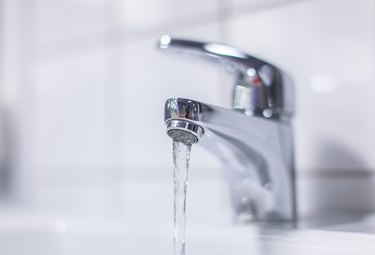Your Complete Guide to Resolving Low Water Pressure in Your Home
Your Complete Guide to Resolving Low Water Pressure in Your Home
Blog Article
Are you currently looking for critical info around Dealing with Low Water Pressure in Your Home?

Low water pressure in your home can be a discouraging trouble, affecting every little thing from bathing to cleaning dishes. If you're experiencing weak water flow, there are a number of possible reasons and options to discover. In this guide, we'll talk about common reasons for low tide stress and useful actions to attend to the concern properly.
Introduction to Low Water Pressure
Low water pressure happens when the circulation of water from your taps, showers, and various other components is weak than usual. This can make daily tasks extra challenging and much less reliable. Recognizing the causes of low water pressure is important to finding the appropriate remedy.
Typical Sources Of Low Tide Stress
Faulty Stress Regulators
Pressure regulators are responsible for maintaining constant water pressure in your home. If they malfunction, it can cause low tide pressure or uneven circulation throughout the house.
Community Supply Of Water Issues
Occasionally, the trouble exists outside your home. Local supply of water concerns, such as main line leaks or upkeep work, can momentarily minimize water pressure in your area.
Pipeline Obstructions
Over time, pipelines can come to be blocked with mineral deposits, debris, or debris, restricting the circulation of water. This is a common concern in older homes with galvanized steel pipes.
Rust
Corrosion within pipelines can bring about leaks and reduced water stress. Corrosion accumulation can restrict water circulation, specifically in aging plumbing systems.
Exactly How to Detect Low Tide Pressure
Checking Pipelines
Inspect visible pipes for indicators of leaks, rust, or blockages. Focus on any kind of unusual sounds, such as knocking or rattling pipes, which might indicate problems within the plumbing system.
Consulting with a Plumber
If you're unable to determine the root cause of low tide stress, think about working with an expert plumber to perform a detailed examination. They can recognize underlying concerns and recommend suitable solutions.
Inspecting Taps and Components
Beginning by examining the water stress at various faucets and components throughout your home. If the concern is isolated to particular areas, it might suggest localized troubles.
DIY Solutions to Repair Low Water Stress
Flushing Hot Water Heater
Sediment accumulation in the water heater can restrict circulation and decrease performance. Flushing the container periodically assists get rid of debris and maintain ideal performance.
Inspecting Pressure Regulator
Ensure that the stress regulatory authority is functioning correctly. Changing or replacing the regulatory authority can assist restore correct water stress throughout your home.
Cleansing Aerators and Showerheads
Natural resources can build up in aerators and showerheads, minimizing water circulation. Remove and clean up these elements on a regular basis to boost water pressure.
Clearing Up Clogs in Pipes
For small obstructions, try using a plumbing serpent or chemical drainpipe cleaner to clear blockages in pipes. Beware when making use of chemicals and adhere to safety standards.
When to Call an Expert Plumber
If do it yourself initiatives fail to deal with the problem or if you presume considerable plumbing issues, it's ideal to seek aid from a licensed plumber. They have the proficiency and devices to address complicated problems securely and efficiently.
Preventive Measures to Preserve Water Stress
Mounting a Pressure Booster
Consider installing a stress booster pump to boost water pressure in locations with continually reduced flow. This can be specifically beneficial for multi-story homes or residential or commercial properties with high-demand fixtures.
Surveillance Water Use
Bear in mind water use practices and stay clear of overtaxing the plumbing system. Simple modifications, such as shocking showers and washing loads, can aid maintain sufficient water pressure.
Routine Maintenance
Set up regular maintenance for your plumbing system to prevent issues such as corrosion, leakages, and clogs. Attending to minor issues early can assist avoid even more substantial repair work later on.
Verdict
Dealing with low tide stress can be frustrating, however identifying the underlying reasons and carrying out suitable remedies can bring back optimum flow throughout your home. Whether it's cleaning aerators, checking pipes, or seeking advice from a plumber, taking aggressive actions can guarantee a consistent supply of water for your everyday needs.
9 Solutions to Low Water Pressure
If you have ever struggled to rinse the shampoo out of your hair, washed your hands under a trickle of water, or been forced to wait for your washing machine to complete a cycle, then you have experienced the nuisance of low water pressure. Low water pressure can turn a simple task into a hassle, but once you identify the cause, either the necessary plumbing fix or a water booster pump can drastically improve your water pressure. In this article, you can learn about nine common causes of low water pressure and how to resolve low water pressure in your home.
How do you know if you have low water pressure?
Testing your home’s water with a pressure gauge is the easiest way to find out if you have low water pressure. Pressure gauges are simple and inexpensive, and once installed, will allow you to check your water pressure with a quick glance.
If your water is from a municipal water supply, select an outdoor faucet near where the main water line enters your home. If your water is from a well, select a faucet that is close to the well’s pressure tank. Attach the pressure gauge to the faucet and tighten it. To get an accurate reading, make sure water isn’t being used anywhere else inside or outside the house, and then fully turn the faucet on. Once the faucet is on, you can read the water pressure on the gauge’s dial. Typical home water pressure should be between 40 and 50 psi, so if the dial reads less than 40 psi, you have low water pressure.
Do water booster pumps increase water pressure?
A water booster pump is a centrifugal pump that improves low water pressure and increases water flow. Much like how a fan’s blades create a gust of air, a water booster pump’s rotating impeller draws water in and then pushes it out with increased force. This force raises the water pressure in a system. A water booster pump is installed where the main water line enters your home, so water pressure is improved in every tap and appliance.
What causes low water pressure?
1. Hard water
If you have hard water, scale can accumulate in your pipes, restrict the water flow, and reduce your water pressure. Hard water has a high mineral content, specifically calcium and magnesium, and scale is formed when these mineral salts dissolve.
The solution: When scale buildup is severe enough to restrict water flow and reduce water pressure, the best solution is to replace your pipes. Products like CLR Calcium, Lime, and Rust remover can diminish scale, but as the scale comes off it may clog your pipes, creating another costly plumbing problem. Not to mention, it is never a good idea to put harsh chemicals in the pipes that supply your drinking water. To prevent scale in the future, we recommend installing a water softener.
The main water shut off valve is not open.
If your water pressure has suddenly decreased and you recently had a repair done, make sure the main water shut off valve is fully open. Most plumbing repairs require the water to be shut off, but if the valve is not completely opened afterward, your water pressure will be restricted.
The solution: Locate your main shut off valve, which is installed where the main water line enters your home, and fully open it by turning it counterclockwise.
A municipal water problem
Low water pressure may not have to do with your own plumbing system. Just like your home’s water supply, the municipal water supply is subject to problems that can cause low water pressure, such as leaks and corrosion.
The solution: Call the municipal water supply to report your low water pressure. Your input may alert them to the problem and will ensure your water pressure is restored as quickly as possible.
Faulty pressure regulator
A pressure regulator is a valve that reduces incoming water pressure as water flows into your home from the main service line. High water pressure can damage pipes and plumbing fixtures, so a pressure regulator is installed to protect your home plumbing system. Most are set to 50 pounds per square inch (psi), but if yours is set lower, your water pressure will feel low. If your pressure regulator is set to 50 psi but your pressure still feels low, it may be broken or clogged.
The solution: Adjust your pressure regulator’s setting to 50 psi if it is currently set lower. If your pressure regulator is faulty, ask a plumber to replace it.
A leak
A leak can reduce water flow and water pressure. To determine if you have a leak, turn all the faucets off inside and outside of your home. About an hour later, check your water meter. If it indicates you are using water, you have a leak.
The solution: Enlist the help of a licensed plumber to locate and repair the leak. Once the repairs are complete, your water pressure should return to normal.
https://www.freshwatersystems.com/blogs/blog/what-causes-low-water-pressure-and-how-to-improve-it

I was made aware of that write-up about 4 Ways to Troubleshoot Low Water Pressure from an associate on a different web page. Sharing is nice. Who knows, you will be helping someone out. I appreciate reading our article about Dealing with Low Water Pressure in Your Home.
Set An Appointment Report this page